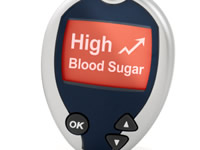 Being Scottish and working in Accident and Emergency in the west of Scotland I probably see more diabetic patients than most. A high proportion of the attendances are due to DKA. Until today I wasn't sure why our incidence is so high. The patient we saw today had had 14 episodes of DKA since diagnosis 2 years ago each one related to drinking excessively and forgetting to take his insulin. He understood the reason and had been educated numerous times but drinking with his pals was too appealing to him.
Being Scottish and working in Accident and Emergency in the west of Scotland I probably see more diabetic patients than most. A high proportion of the attendances are due to DKA. Until today I wasn't sure why our incidence is so high. The patient we saw today had had 14 episodes of DKA since diagnosis 2 years ago each one related to drinking excessively and forgetting to take his insulin. He understood the reason and had been educated numerous times but drinking with his pals was too appealing to him.Each week we start with a review of the physiology as being the basis for understanding the pathology and this week is no exception.
Exocrine Functions
 Pancreatic Acini
Pancreatic Acini
Trypsin, chemotrypsin, lipase and amylase
Signals from gastrin, cholecystokinin and secretin – stomach and duodenum
Endocrine
Islets of Langerhans
Alpha cells producing glucagon (15–20% of total islet cells) Beta cells producing insulin (65–80%)
Delta cells producing somatostatin (3–10%)
 |
| This simple diagram shows glucose homeostasis |
Now DKA is important and a heavily examined topic because of its incidence and high mortality. Unbelievably pre-1920s and the use of insulin the mortality was close to 100%. This has fallen with modern medicine to 0.7%.I think the key point of DKA is that it occurs due to a LACK OF INSULIN rather than a high blood sugar and we are treating the lack of insulin rather that the high glucose. Without insulin the cells lack their GLUT transporters and as a result are paradoxically glucose deplete. As a result the following cascade occurs:Lack of Insulin
- Reduced cellular glucose
- Increased glycogenolysis and gluconeogenesis
- Adipose and muscle metabolism causing ketone formation
- Glucosuria causes polyuria
- Ketouria and electrolyte losses
- Bicarbonate decreases due to acidotic ketones
- Respiratory compensation with tachypnoea lowers pCO2
- Decompensation

Diagnosis is simple, you need the three letters from the title:
D - Blood sugar >11 or known diabetic
K - Ketones +2 in the urine or >3mmol in the blood
A - Acidotic Bic <18 or H+ >45
CAUSES
- 1st presentation Diabetes type I
- Not taking insulin due to poor education/poor compliance (weight issues in vain females/males)
- Intercurrent Illness
- Stroke or MI
MANAGEMENT
Management should take place in a HDU setting using an ABCDE approach.The 3 pillars of management are:
 Insulin is given to drive cells and turn off gluconeogenesis and glycogenolysis - not to lower the blood sugar number! The amount given in relation to the sugar is minor the key is to get some in quickly.
Insulin is given to drive cells and turn off gluconeogenesis and glycogenolysis - not to lower the blood sugar number! The amount given in relation to the sugar is minor the key is to get some in quickly.
Human Insulin – Actrapid no loading dose needed
BM> 14 insulin at 6units/h
9-14, insulin at 3 units/h
<9, insulin at 1 unit/h
0.9% Saline
1L/hour for 2 hours
500ml/hour for 4 hours
250ml/hour for 4 hours
When the blood sugar drops below 14 change the fluids to dextrose as usually more insulin will be required to turn off the gluconeogenesis and glycogenolysis than normal blood sugars allow.
 Potassium is given even when the the levels are normal as from the management of hyperkalaemia we know insulin drives potassium into cells.
Potassium is given even when the the levels are normal as from the management of hyperkalaemia we know insulin drives potassium into cells.